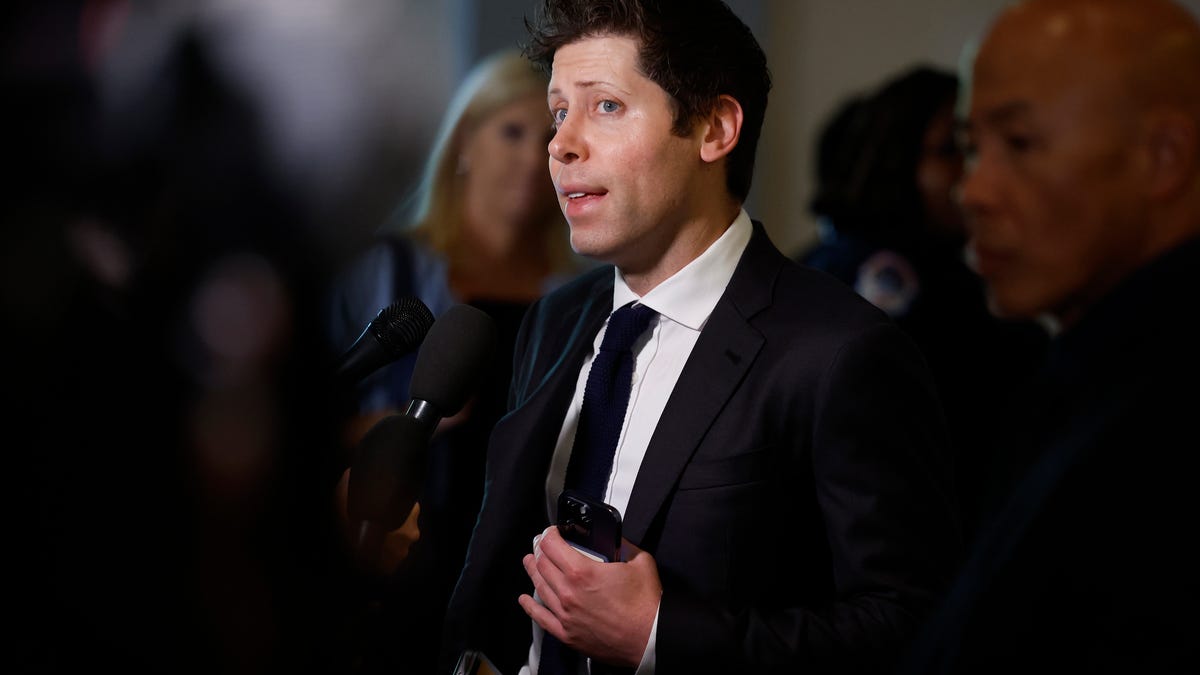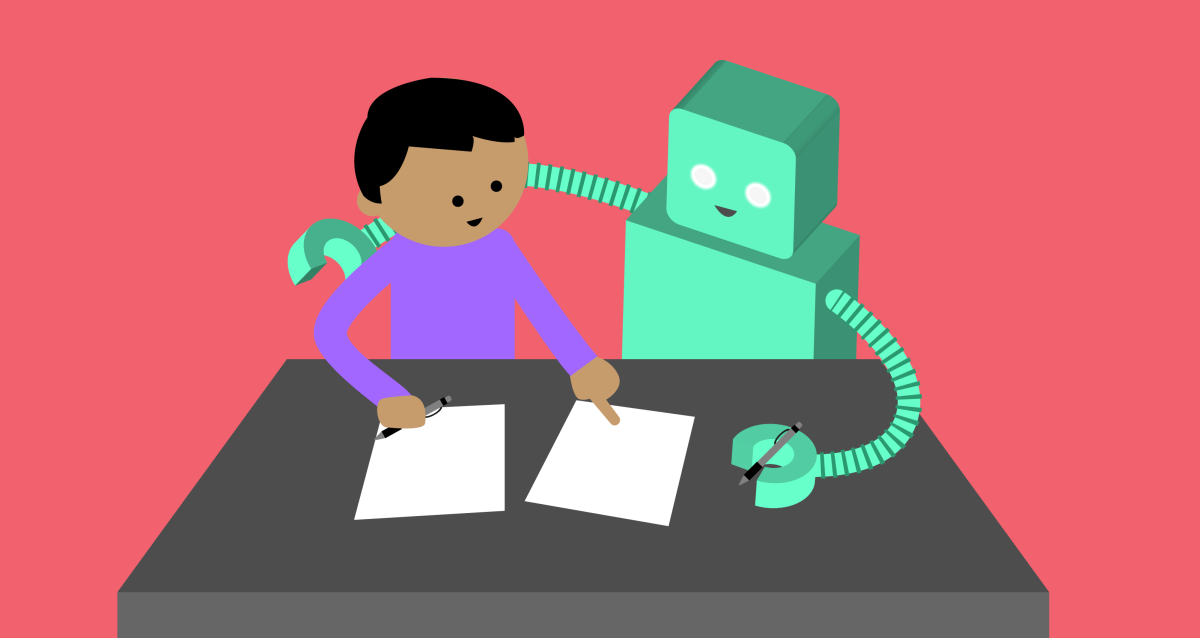- AI Bytes Newsletter
- Posts
- AI Bytes Newsletter Issue #27
AI Bytes Newsletter Issue #27
Mike's video review of RunwayML's Gen-3 Alpha Release, an exploration of OpenAI's ambitious Five-Level AGI System, and a spotlight on Live Portrait, our AI tool of the week. Rico takes a critical look at AI's impact on creativity, while Mike shares essential tips for protecting personal information when using AI tools.

Welcome to the 27th edition of AI Bytes! This week, we're looking at some exciting developments in the world of AI. We've got Mike's video review of RunwayML's Gen-3 Alpha Release, an exploration of OpenAI's ambitious Five-Level AGI System, and a spotlight on Live Portrait, our AI tool of the week. Rico takes a critical look at AI's impact on creativity, while Mike shares essential tips for protecting personal information when using AI tools. We've packed in must-read articles, tech recommendations, and even an inspiring story about preserving voices through AI. From cutting-edge innovations to practical advice, this issue covers the full spectrum of AI's rapid evolution. Let’s enjoy the latest insights from the AI frontier together!
The Latest in AI
A Look into the Heart of AI
Featured Innovation
RunwayML Gen-3 Alpha Release
We’re excited about Runway’s Gen-3 Release, unlike OpenAI, RunwayML’s cycle from their teasers to release was pretty quick (P.S. OpenAI… we’re still waiting on Sora!). Does this change the game? Mike put together a video with a full review so you can judge for yourself!
If you’ve seen a game changing innovation and want to share it with us, hit us up at [email protected]!
Ethical Considerations & Real-World Impact
Five Horsemen of the AI Apocalypse (or Utopia?) - OpenAI's Vision
OpenAI's unveiling of its five-level system for tracking artificial general intelligence (AGI) progress has thrust us into a new era of AI development, bringing with it a host of ethical challenges and societal implications. As the company reportedly approaches level two, questions of transparency, accountability, and fairness loom large. While OpenAI's openness in sharing these levels is commendable, it also risks overhyping capabilities to attract funding. The push towards more advanced AI intensifies concerns about bias, which we have been talking about since the beginning. Now, OpenAI is facing the crucial task of ensuring its systems don't amplify existing prejudices. As AI takes on more complex decision-making roles, the equitable distribution of its benefits becomes a pressing issue. Privacy and security concerns also escalate, demanding robust safeguards against data breaches and misuse. The disbanding of OpenAI's "Superalignment" team has left us and many others wondering how we'll keep increasingly powerful AI aligned with human values and interests.
The real-world impact of this AI progression is profound and far-reaching. We're on the cusp of a dramatic transformation in the job market, with AI potentially displacing certain roles while creating new opportunities. Managing this transition without leaving workers behind will be a significant challenge. However, the potential for innovation is immense, with higher-level AI potentially solving some of humanity's most pressing problems. The key will be ensuring these advancements benefit society as a whole rather than just corporate interests. As AI increasingly enters the realm of decision-making, we're forced to confront tough questions about human autonomy and the extent to which we should rely on AI for critical choices. Building public trust in these systems will be crucial, necessitating transparency in their operations and decision-making processes.
On the global stage, AI advancements could significantly alter the balance of power. Countries leading in AI development may gain substantial strategic advantages, potentially sparking new geopolitical tensions (as if we need more of those...). This underscores the need for international cooperation and the establishment of ethical standards to prevent a high-stakes AI arms race, which in the current global climate, may prove incredibly challenging, if not impossible.
OpenAI's ambitious roadmap to AGI isn't just a tech company's pipe dream - it's a wake-up call for all of us. This journey we're on isn't going to be a smooth ride. We're talking about reshaping the job market, potentially solving global crises, and maybe even redefining what it means to be human. It's exciting, sure, but it's also pretty daunting and involves major undertakings. The ball's in our court now as to how we handle this AI revolution, between keeping it fair and unbiased to making sure it doesn't run amok - that's on us. We need to be smart about this. This isn’t just a simple race to the finish line, it's really going to be about making sure we're headed in the right direction, weighing the consequences of our actions while keeping generations to come in mind.
AI Tool of the Week - Live Portrait
The Toolbox for Navigating the AI Landscape
This week's spotlight is on Live Portrait, a cutting-edge AI tool that revolutionizes how we interact with images by bringing static photos to life. Live Portrait uses advanced deep learning techniques to animate photos, infusing them with lifelike movements and expressions that make them look as if they were captured in real-time.
Key Features Include:
Realistic Animations: Transform still images into animated portraits with natural movements and expressions, making your photos more engaging and dynamic.
User-Friendly Interface: With an intuitive and easy-to-navigate platform, users of all skill levels can create stunning animated content without the need for extensive technical knowledge.
Versatile Applications: Ideal for creating captivating content for social media, enhancing digital memories, or exploring innovative artistic projects. Live Portrait opens up a world of creative possibilities.
Customization Options: Tailor the animations to suit your needs, whether it's a subtle smile or a full range of facial expressions. The tool offers a variety of customization options to perfect your animated portraits.
Why Live Portrait?
Live Portrait stands out as a powerful tool for anyone looking to add a dynamic touch to their digital assets. In a world where visual content is king, animated photos can capture attention and convey emotions in ways that static images simply can't. Whether you're a content creator aiming to boost engagement, a marketer looking to make your campaigns more impactful, or just someone who wants to bring their photo albums to life, Live Portrait offers an innovative solution to animate your images with ease.
How to Get Started:
1. Upload Your Photo: Begin by uploading a static image to the Live Portrait platform.
2. Customize the Animation: Use the intuitive tools to choose the type of animation and customize facial expressions and movements.
3. Preview and Save: Preview your animated portrait to ensure it meets your expectations, then save and share your creation.
Explore Live Portrait today and see how easy it is to transform your photos into lively, animated portraits that capture the essence of the moment.
Here’s a fun clip that Mike did with Live Portrait to promote the newsletter:
@artificialantics 𝐖𝐞'𝐫𝐞 𝐚𝐥𝐰𝐚𝐲𝐬 𝐩𝐮𝐬𝐡𝐢𝐧𝐠 𝐭𝐡𝐞 𝐛𝐨𝐮𝐧𝐝𝐚𝐫𝐢𝐞𝐬 𝐨𝐟 𝐰𝐡𝐚𝐭'𝐬 𝐩𝐨𝐬𝐬𝐢𝐛𝐥𝐞 𝐰𝐢𝐭𝐡 𝐀𝐈. 🧪 This week, we took on the challenge of creating an 𝐀𝐈 𝐃𝐞𝐞𝐩𝐟𝐚𝐤𝐞 of 𝐖𝐚𝐥𝐭𝐞𝐫... See more
If you’ve got a suggestion on tools we should check out, email us at [email protected] and let us know.
Rico's Roundup
Critical Insights and Curated Content from Rico
Skeptics Corner | Scrutinizing AI's Dual Impact on Creativity
Hey folks! As "The Creative Skeptic" on our podcast, I've always had a mix of skepticism towards AI and a love for creative pursuits. Mike and I have dabbled with various AI tools, using them to spark ideas, create new imagery, and explore uncharted territories of creativity. We've experienced firsthand how these tools can unlock new possibilities, but we're also aware of the potential risks to our creative growth. It's a classic double-edged sword, something we've touched on before when discussing the risks of cognitive enfeeblement.
A recent study highlighted by TechCrunch sheds some interesting light on AI's impact on creativity. It turns out, AI's influence is a bit of a Jekyll and Hyde situation. On an individual level, AI can be a creativity booster, offering inspiration, generating ideas, and helping with tasks that might otherwise stump us. But when it comes to group creativity, AI seems to throw a wrench in the works, leading to a homogenization of ideas and an over-reliance on AI-generated solutions. This duality raises some big questions about how we should be integrating AI into collaborative environments and creative processes.
Let's break it down a bit:
The Individual Boost:
On a personal level, AI can be a powerful creativity enhancer. Tools like ChatGPT, MidJourney, and DALL-E are enabling artists, writers, and musicians to push boundaries like never before. These AI systems can generate novel ideas, suggest improvements, and even create entirely new art forms. For example, an artist can use AI to quickly generate multiple iterations of a concept, cherry-pick the best elements, and refine their work with unprecedented efficiency. This really highlights AI's potential as a co-creator rather than just a tool.
I've personally found generative AI to be a great source of inspiration. It helps me flesh out concepts, develop storylines and characters, and has even pushed me further into the tech world, allowing me to bring ideas to life in ways I never thought possible.
The Collective Creativity Conundrum:
Here's where things become a bit of a sticky wicket. The study points out a significant downside when AI is used in group settings. Team creativity tends to take a hit when AI tools enter the picture. This is mainly because groups often accept AI-generated solutions without much critical thought, leading to a conformity of ideas. Relying too heavily on AI can discourage the kind of divergent thinking and spontaneous collaboration that drives real innovation. There's also a risk that AI-generated suggestions might overshadow individual contributions, causing team members to defer to the AI rather than trusting their own creative instincts.
Ethical Considerations:
We can't ignore the ethical implications of AI in creative processes. Artists and creators face the very real risk of having their unique styles replicated without consent or compensation, as we have showcased and warned about so many times before. We've discussed tools like Nightshade previously, which aim to protect artists' work from unauthorized AI usage. This whole situation raises some sharp questions about who owns AI-generated content and how we protect the rights of original creators.
Striking a Balance:
To make the most of AI's benefits while avoiding its pitfalls, we need to find a balance. It's crucial to encourage critical engagement with AI suggestions to maintain creative integrity. Groups should be encouraged to use AI as a jumping-off point for ideas rather than a final answer. We also need to foster environments where individual contributions are valued just as much as AI inputs. This will help preserve the diversity of thought that's essential for true innovation.
Rico’s Final Thought:
In the end, while AI has the potential to significantly boost individual creativity, its impact on group creativity requires careful consideration. By promoting critical thinking and ethical practices, we can leverage AI's strengths without compromising the collaborative spirit that drives real creative breakthroughs. After all, over-reliance on it will surely give us some of the least entertaining books, movies, and art that we have seen in our own lifetimes.
Let's face it, when a company fails (yes, I have one in mind) to innovate due to a lack of creativity, we begin to feel like their products become inferior and they have lost the point completely. Despite our best efforts to create human-like AI and reach AGI, we can never fully replicate or replace the creative process of the human mind, with its spontaneous bursts of inspiration and unique, often unpredictable ideas. I don’t know about you, but I find that rather comforting and reassuring.
For more insights into the implications of AI in creativity, check out our recent discussions and episodes on Artificial Antics and stay tuned for our upcoming episodes where we delve deeper into AI's evolving role in our lives.
Must-Read Articles
Mike's Musings
Mike’s AI Tip
Essential Tips for Using AI Tools Effectively
Hey Everyone, Mike here! Last week I spoke to a group at work on using AI safely and security and that inspired me to share today’s deep dive with you today.
As we leverage AI tools to enhance our productivity and efficiency, it is paramount that we do so responsibly and securely, especially when it comes to managing and protecting Personally Identifiable Information (PII).

Understanding PII
PII refers to any data that can be used to identify, contact, or locate a specific individual.
Examples include:
Names
Phone Numbers
Email Addresses
Social Security Numbers
Account Numbers
Best Practices for PII Management
No Identifying Data: Always ensure that no data that can identify an individual is shared outside of secure environments. This includes all forms of communication and data processing activities.
Avoid Sensitive Information: Protect any sensitive information about individuals or organizations. Avoid sharing strategic plans, internal processes, or proprietary technologies.
Use Approved Apps and Plugins: Stick to tools and plugins that have been vetted and approved for their compliance with security standards.
Verify AI Outputs: AI can sometimes generate outputs that inadvertently include PII. Always review and verify the content generated by AI to ensure no sensitive information is being shared or misused.
Follow Security Protocols: Adhere to established security protocols designed to protect both individuals and organizations. Familiarize yourself with these protocols and integrate them into your daily operations.
Additional Measures
Create a list of approved AI Tools for your business
Understand and guide AI usage at your business!
If you’re a business owner, executive or even a department head, you should understand the AI tools your team members are using, make sure to do frequent check-ins (could be a survey, raised hands on an all company meeting etc. conversation with your team) to get a pulse on employee AI usage, understanding and potential blind spots.
Encourage team members to seek guidance when in doubt. Supervisors or relevant leaders should be able to provide clarity or escalate the issue to appropriate teams for further guidance.
Every company should have a group of “AI Ambassadors” these are the folks forging ahead and ensuring a safe path for the rest of the organization. These folks should meet regularly and communicate with the greater team frequently to ensure every team member is equipped to use AI safely, securely, responsibly and productively.

Protecting PII is not just a regulatory requirement but a fundamental aspect of maintaining trust and integrity in our operations. By following these guidelines and staying vigilant, we can harness the power of AI while safeguarding the privacy and security of all individuals and organizations involved.
Mike Favorites
Sharing personal recommendations for technology, AI books, podcasts, or documentaries.
LinkedIn Video: Using AI to preserve Someone’s Likeness
These clever folks used this ElevenLabs voice cloning and API to preserve their friend Lee’s ability to communicate with his friends and family in his unaltered voice. Lee was diagnosed with Motor Neurone Disease (MND/ALS) in 2015, he was an avid climber, mountain biker and guitarist before his diagnosis. Lee had his voice recorded for a voice app to use when he lost the ability to speak. The original voice app was basic and didn't sound like Lee. They’ve been continuously improving it with the help of some folks and ElevenLabs technology.
See video and post below:
Runway Gen-3 AI Video Review
I always appreciate when someone takes the time to dig in and do an in-depth review of a new AI tool, this isn’t something I always have the time to do.
In this clip Caleb (YouTube: @curiousrefuge) breaks this down and gives us the full story on Runway Gen-3 alpha! I liked this so much that I did a watch video of my own on it my take here!
If you’ve got something you think I’d like, hit me up at [email protected]
Latest Podcast Episode
Connect & Share
Stay Updated
Subscribe on YouTube for more AI Bytes.
Follow on LinkedIn for insights.
Catch every podcast episode on streaming platforms.
Thank You!
Thanks to our listeners and followers! Continue to explore AI with us. More at Artificial Antics (antics.tv).
Quote of the week: “Right now, people talk about being an AI company. There was a time after the iPhone App Store launch where people talked about being a mobile company. But no software company says they’re a mobile company now because it’d be unthinkable to not have a mobile app. And it’ll be unthinkable not to have intelligence integrated into every product and service. It’ll just be an expected, obvious thing.” — Sam Altman“



/cdn.vox-cdn.com/uploads/chorus_asset/file/25384193/STK470_AI_LAW_CVIRGINIA_C.jpg)



